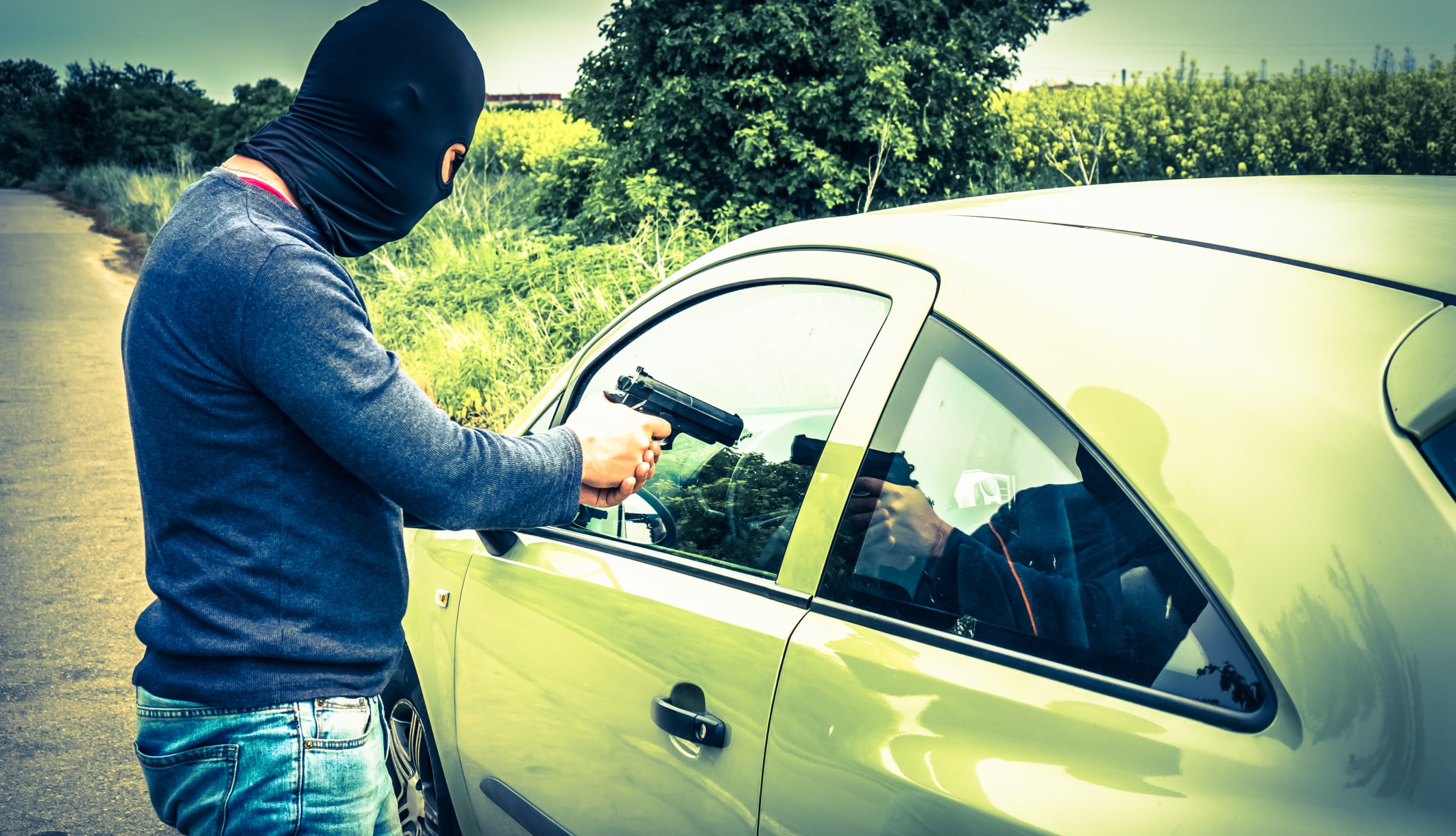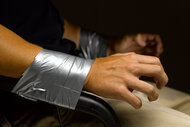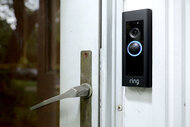Create a free profile to get unlimited access to exclusive videos, breaking news, sweepstakes, and more!
What To Do — And What Not To Do — During A Carjacking
Do you know how to survive if someone tries to take your car by force?

One minute you’re idling at a stop light on your way home from work, and the next, a stranger is standing outside of your window with a gun pointed in your face, telling you to get out of the car. Do you fight or do you flee?
A carjacking is a terrifying ordeal, and one that no driver wants to experience. According to the National Crime Victimization Survey’s 2004 report on carjacking (the most recent study available), around 38,000 carjackings were committed annually between the years 1993 and 2002, with the vast majority of the incidents occurring in cities or suburbs. Though men are, statistically speaking, more likely to become victims of carjackings, carjackings can happen to any driver, at any time.
Here’s what to do — and what not to do — should you ever find yourself in such a frightening situation.
Don't fight back in a carjacking situation.
According to the National Crime Victimization Survey, 74% of carjackings reported were committed with a weapon, and the last thing you want to do is get into a fight, or even a tense negotiation, with someone who's armed.
“Don’t fight, argue, or confront the suspect,” Sgt. Eric Buschow of the Ventura County Sheriff’s Office in California told Oxygen.com. “A carjacking is typically a robbery — they want the car, and are likely in a desperate situation. Give it to them and walk away safely. Don’t risk your life for an object that is easily replaceable.”
In the event of a carjacking, cooperating with the carjacker may save your life. Don’t make any sudden movements, and give the carjacker what they want, be it your phone, money, car — or all of the above.
“I would not recommend fighting someone who is armed with a weapon,” said Sgt. Buschow. “If they are armed and demand you give them the car, then give them the car.”
Stay calm.
Keeping your cool while becoming the victim of any crime is, of course, easier said than done, but keeping your composure is vital in the event of a carjacking. Maintaining eye contact and keeping your voice level diffuses an inevitably tense situation.
“Make direct eye contact and firmly respond with a statement such as, ‘I am getting out of the vehicle,’” the 2017 SOS Guidebook of the U.S. Department of State’s Foreign Service Institute states. If there are children in the car with you, tell the carjacker your intentions to remove the children from the vehicle and then do so as quickly as you can, the department advises.
In order to decrease the likelihood of the situation escalating, make it clear at every opportunity that you are not resisting the carjacker’s wishes and will not fight.
Try to be aware of what’s happening and who you’re dealing with.
While law enforcement officials advise civilians to avoid fighting with criminals, especially those who are armed, one thing you can do is help the police catch the person responsible by taking note of the carjacker’s appearance and any distinguishing features, like tattoos or other markings. Just make sure doing so doesn’t interfere with your safety.
“Give the criminal what they want and be a good witness,” said Charles McCrary Jr., a retired lieutenant who spent 32 years with the police department of Creve Coeur, Missouri.
Can you tell how tall your carjacker is? What about his weight and eye color? These are all important details that the police can use during their investigation later.
Discourage them from going to your house, if possible.
In some cases, a carjacker may want to kidnap you and take you back to your house, where they can use your keys to gain entry to your home and take whatever they want — and do whatever they want to you in the process.
“If … the criminals want to go to your house, it may help to tell them you live in a large housing compound guarded by security guards and police, or something similar to dissuade the criminals from going to your home,” the U.S. Department of State suggested in a release on the subject.
Fight — if you have to.
Unfortunately, there are occasionally situations where getting away isn’t an option and a physical confrontation is your only choice. If someone is seeking specifically to harm you or even kidnap you, defend yourself as if your life depended on it, because it just might.
“The only time to fight is if the criminal wants to kidnap you as well,” said McCrary. “Nothing good would come from a kidnapping. Protect yourself and fight for your life.”
Learning common self-defense techniques, or even keeping an easy-to-use weapon in your car, such as pepper spray or a small taser, can help you in the long run.
“Do everything you can to physically overcome the threat and get away as quickly as you can,” said Sgt. Buschow. “People often think they are helpless or cannot fight back. That’s not true. People have the legal right to defend themselves when they are attacked.”
What can you do to avoid a carjacking?
If you're asking what you, as an average driver, can do to lessen the likelihood of experiencing a carjacking firsthand, there are a multitude of steps you can take to protect yourself, such as keeping your doors locked and your windows up whenever you're behind the wheel. Constantly being aware of your surroundings, instead of being aware of what’s on your phone, is another great place to start.
“If you look attentive and alert, you’ll be less of a target than someone who is obviously distracted,” explained Sgt. Buschow.
“Desirable seizure locations,” or places where drivers are more likely to become carjacking victims, typically include places where drivers commonly leave their cars idling — think gas stations, ATMs, or even the driveway of your home. Criminals commonly target potential victims as they’re walking back to their cars from a shopping mall, grocery store, or the bank, McCrary explained... all places where people are more likely to have cash on them.
“Criminals have actually followed victims home from these locations and attacked as they exited their cars,” warned McCrary.
It also isn’t necessary to wait for a situation to become explicitly dangerous before taking preventive action. In many cases, trusting your instinct — the gut feeling that tells you a situation may be dangerous — can save you. Always pay attention to your instincts, especially at locations where carjackings are more likely to occur, such as at a stop light or a stop sign.
“Be proactive,” McCrary said. “If someone unknown approaches you and it doesn't feel right, trust your instincts. Drive away fast.”
Drivers should also be wary of common methods of distraction criminals use to lure their victims into unsafe situations. It isn’t unusual for a potential carjacker to get close to their victim’s car by creating innocuous reasons to do so, sometimes by offering to wash windows or attempting to sell something to the driver, according to the U.S. Department of State’s Foreign Service Institute. One common tactic carjackers have been known to use is intentionally hitting the rear of someone’s vehicle, just to make them get out of the car to inspect it, only to take advantage of the open driver’s side door and make off with the vehicle.
“Don't get out of the car if someone hits your car from behind, when it may be intentional just to get you out of the car,” McCrary advised. “Drive to the nearest police station, or at least a busy gas station, and call the police.”
While no one wants to worry about the possibility of becoming the victim of a crime, it’s important to think about what you would do if such a situation were to ever occur, and educate yourself on how to survive.
McCrary advised drivers to “always have a plan.”
“What would you do if [a carjacking] happens? Plan ahead,” McCrary said. “Stay proactive and safe. Don't be a victim because you are not prepared.”
[Photo: andriano_cz/Getty Images]

























